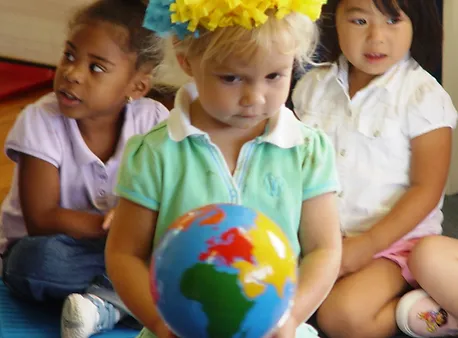Practical Life Skills
Activities in this area help the child become a self-sufficient, independent individual, while at the same time enabling them to develop harmonious behavior and peace of mind. By repeating practical life activities, the child develops small motor skills and at the same time learns to focus intently on the task at hand. Success in completing these activities develops a personality that loves work, has a sense of responsibility, is not intimidated by difficulties, can cope with problems, and is at peace with himself/herself and his/her environment.
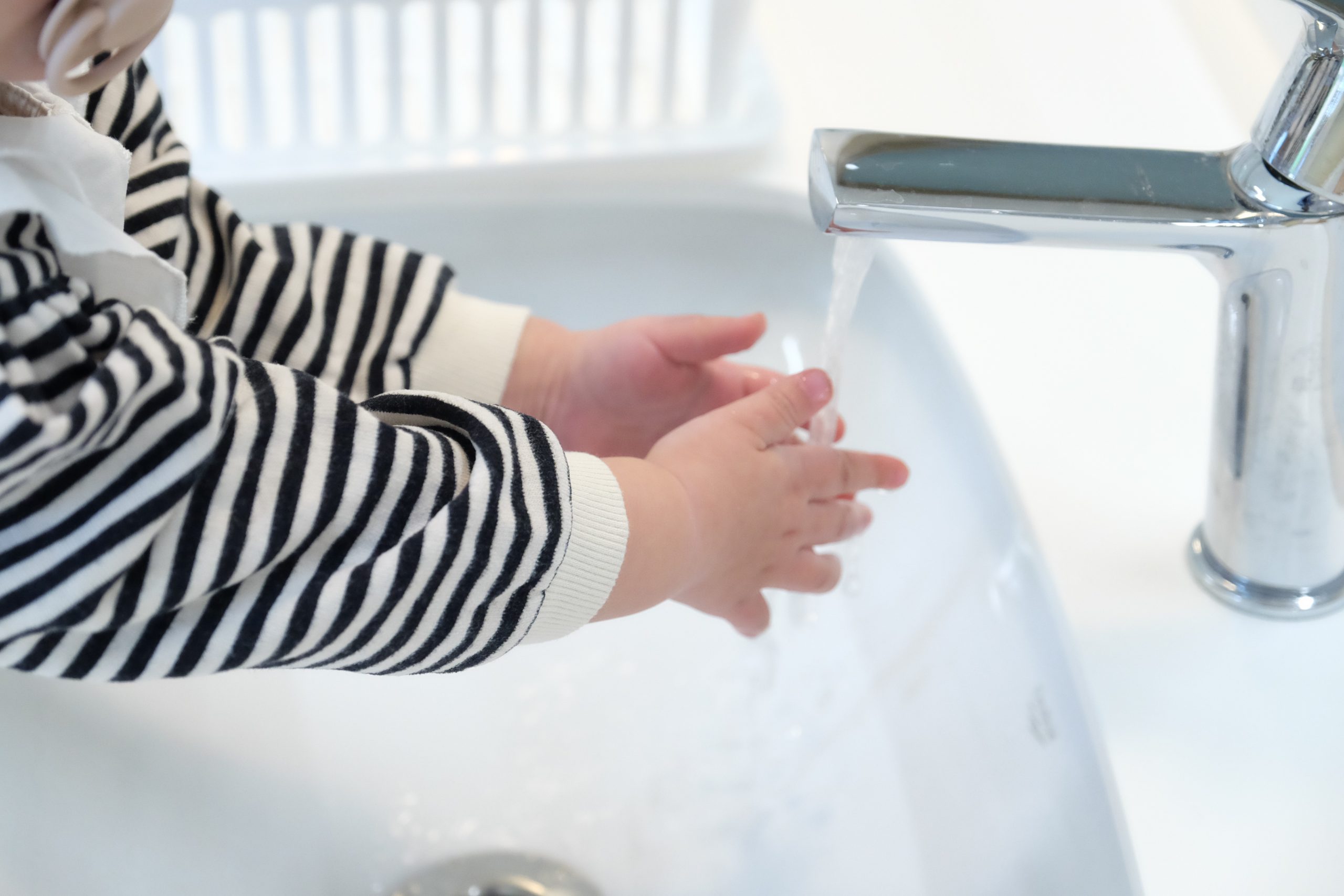
The exercises targeted in the field of “Practical Life” in Montessori education consist of all the activities that the child may encounter in his/her daily life. These activities are prepared in accordance with the cultural characteristics of the society in which he/she lives. There are an incredible number of natural opportunities to support the child’s motor skills and mental development; for example: using spoons and forks, grasping, transferring small items with tongs, transferring fluids with sponges, washing tables, polishing silver, sorting beans, dusting shelves, opening and closing bottles, buttoning clothes and tying shoelaces.
Maria Montessori says that man owns his environment with his hands. By practicing with their wrists and fingers through practical life activities, children learn a lot: how to coordinate and control their movements, how to be patient, how to work with focus, etc. They prepare for literacy, numeracy, sensory and universal thinking. They learn to develop their own limits and competencies so that they realize their own strengths, and ultimately come to understand the need to follow a set, logical sequence to complete any given task.
Sensory Education
Montessori recognizes the senses as the organs through which the child communicates with the environment. In a sense, the sensory organs are the child’s windows to the world, and Montessori sensory materials give children the key to open that world. Sensory education, along with the parallel field of practical life skills, progress at the same time and form the basis of the Montessori Method.
Both fields require and strengthen the use of concentration. A child concentrating their attention on a given task is a crucial point in Montessori education. Learning can only take place as a result of focused attention, and this attention begins with sensory engagement. As Maria Montessori says, “You cannot put in the child’s mind what you do not put in his hand.”
Montessori sensory materials help the child to organize the stimuli he/she has received from birth until their present age. The sensory curriculum includes materials developed for all sensory organs. The materials are designed in a certain order and in a manner to attract the child’s attention and encourage their curiosity. An important feature of these materials is that the child can check whether he/she is making mistakes while working on his/her own. Each material targets only one sense and teaches only one concept. Thus, the child is not confused and is able to make the most of each activity.
For example, the color tablets used to learn colors are all made of the same material, the same size and shape, and only the colors are different. Similarly, sound tubes, smell tubes, touch tablets, weight tablets, heat tubes, heat tablets differ only at the point of sensitization, while other features are the same.
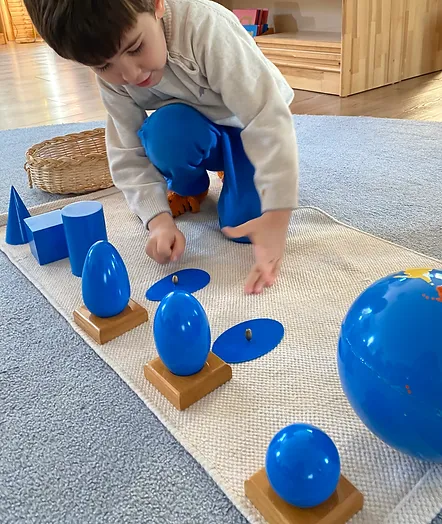
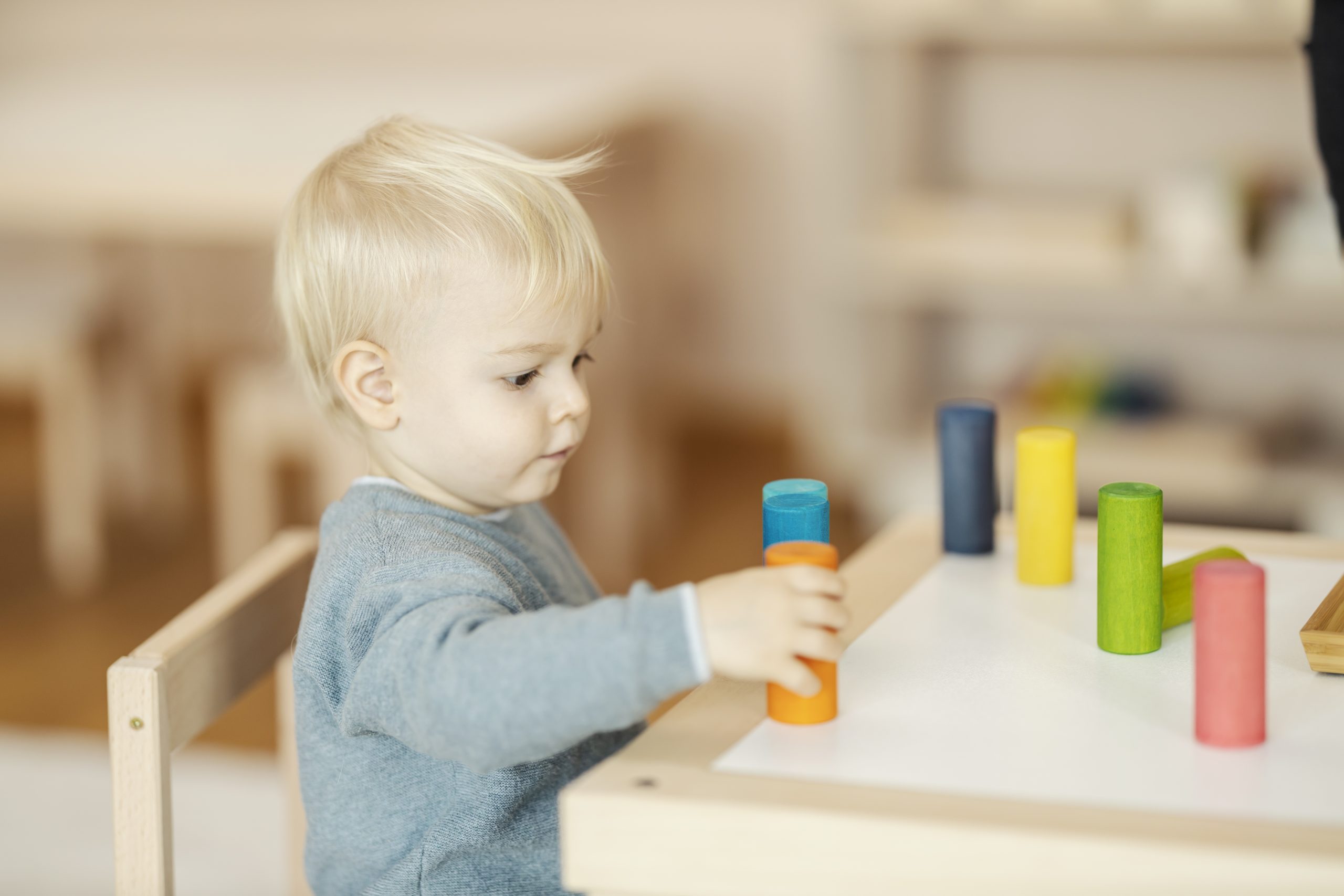
The child’s work in this area enables the development of the following basic mental functions: recognizing and distinguishing differences, integrating, abstracting, matching, grouping and sorting, making series with the same characteristics, etc. For example, children learn the existence of different sizes through the “cylinder blocks” activity; they learn of three different sizes with the “pink tower” activity; the connection between weight and size with the “brown ladder,” and the concept of length with “red bars.” As a result, children record the stimuli they receive from their environment in their brains in an organized way. By stimulating the basic functions of the mind with sensory-enhancing materials and nurturing the skills of concentration and focus, such activities are able to combat attention deficit and hyperactivity disorders.
Mathematics
Montessori philosophy assumes that analytical and mathematical thinking is inherent in human beings.
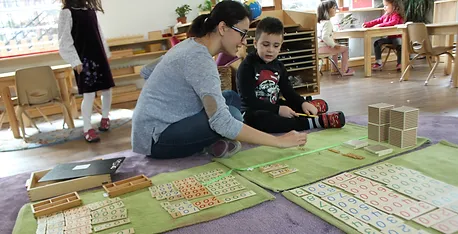
In order to develop this potential in the child, it is essential to provide him/her with didactic educational materials and opportunities to gain experiences by using his/her senses. From these experiences, the child learns to abstract, measure, compare, and think logically.
The aim of Montessori mathematics is not to teach mathematical operations, but to develop mathematical thinking and facilitate learning mathematics by making abstract mathematical concepts concrete (for example, digits from the tens to hundreds to thousands, fractions, basic arithmetic, and the like). Once these concepts are made concrete, and while the child still has the miracle of the absorbent mind, he/she will learn mathematics as effortlessly as any other form of knowledge.
Grammar & Language
The child, whose small motor and manual skills and perceptive abilities develop through practical life skills and sensory training, learns to read and write very naturally. This process is done via the concrete letter-tracing and writing activities prepared by Dr. Montessori, and ultimately enable the child to learn to write with minimal difficulty.
A child who loves books, reading and writing, and who acquires these skills at an early age, continues his or her education as a self-confident student who is able to look at things from a broad perspective and follow their own research interests instead of being bored and floundering later in his or her education. When such a student finishes their own work, they can help other students in the class and even the teacher, further increasing their own knowledge and self-confidence.
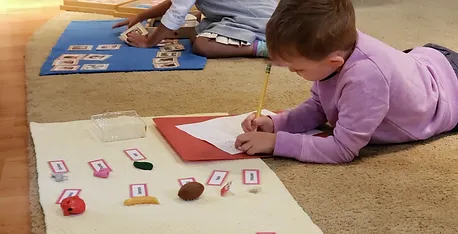
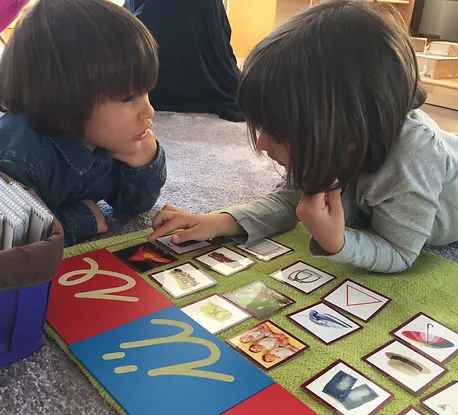
Children who are instilled with a love of books and reading between the ages of 3 and 6, when sensitivity to language development is at its peak, and who are exposed to children’s literature at an early age, are able to transcend the boundaries of the social and cultural environment in which they live, expand their horizons and change their outlook on life. What is important here is not only that the child learns to read and write in a technical sense, but also that the desire to read books, which will last a lifetime, is established early. Acquiring the desire and motivation to read and write at an early age can be likened to the developmental development of all other areas and learning habits; when building a house, the bricks are placed one-by-one on a solid foundation to ensure the structure is stable.
Culture
Every child who feels a strong love for his or her environment and every living creature around him or her, and who finds pleasure and excitement in what he or she does, gives us hope that humanity can develop in a new direction…
Maria Montessori, Eğitim ve Barış
Dr. Montessori used the term “Culture” to introduce the child to the greater world around them. Sub-branches in the field of culture include science (biology, zoology, geography and the natural sciences) as well as Social Studies (history, dance, music and art). All these subjects are presented as part of the children’s daily routine, integrated through materials that enable children to learn via their senses and to explore in nature.
Through culture lessons, the child grows up as a person who is knowledgeable about humanity and history, open-minded, respectful of differences and peaceful – in short, it enables the child to see themselves as a citizen of the world.
Maria Montessori said, “From a very young age, we should make children remember that the world we live on is not ours alone, and that we share it with other living beings while using its resources. Human beings should not forget the responsibility of being the most intelligent creature on the planet.” To that end, in a Montessori school children cultivate plants and trees and take responsibility for their care. They feed animals, collect environmentally harmful waste and learn to reduce, reuse and recycle.
